Stress-induced glucocorticoids at the earliest stages of herpes simplex virus-1 infection suppress subsequent antiviral immunity, implicating impaired dendritic cell function
- PMID: 20089700
- PMCID: PMC3701455
- DOI: 10.4049/jimmunol.0902469
Stress-induced glucocorticoids at the earliest stages of herpes simplex virus-1 infection suppress subsequent antiviral immunity, implicating impaired dendritic cell function
Abstract
The systemic elevation of psychological stress-induced glucocorticoids strongly suppresses CD8(+) T cell immune responses resulting in diminished antiviral immunity. However, the specific cellular targets of stress/glucocorticoids, the timing of exposure, the chronology of immunological events, and the underlying mechanisms of this impairment are incompletely understood. In this study, we address each of these questions in the context of a murine cutaneous HSV infection. We show that exposure to stress or corticosterone in only the earliest stages of an HSV-1 infection is sufficient to suppress, in a glucocorticoid receptor-dependent manner, the subsequent antiviral immune response after stress/corticosterone has been terminated. This suppression resulted in early onset and delayed resolution of herpetic lesions, reduced viral clearance at the site of infection and draining popliteal lymph nodes (PLNs), and impaired functions of HSV-specific CD8(+) T cells in PLNs, including granzyme B and IFN-gamma production and the ability to degranulate. In knockout mice lacking glucocorticoid receptors only in T cells, we show that these impaired CD8(+) T cell functions are not due to direct effects of stress/corticosterone on the T cells, but the ability of PLN-derived dendritic cells to prime HSV-1-specific CD8(+) T cells is functionally impaired. These findings highlight the susceptibility of critical early events in the generation of an antiviral immune response to neuroendocrine modulation and implicate dendritic cells as targets of stress/glucocorticoids in vivo. These findings also provide insight into the mechanisms by which the clinical use of glucocorticoids contributes to altered immune responses in patients with viral infections or tumors.
Conflict of interest statement
The authors have no financial conflicts of interest.
Figures

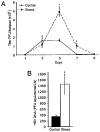
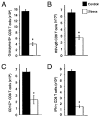

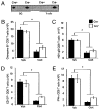
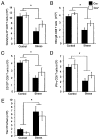
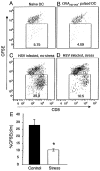
Similar articles
-
Psychological stress impairs the local CD8+ T cell response to mucosal HSV-1 infection and allows for increased pathogenicity via a glucocorticoid receptor-mediated mechanism.Psychoneuroendocrinology. 2008 Aug;33(7):951-63. doi: 10.1016/j.psyneuen.2008.04.010. Epub 2008 Jul 25. Psychoneuroendocrinology. 2008. PMID: 18657369 Free PMC article.
-
Elevated maternal corticosterone during lactation hinders the neonatal adaptive immune response to herpes simplex virus (HSV) infection.Brain Behav Immun. 2008 Mar;22(3):339-53. doi: 10.1016/j.bbi.2007.08.012. Epub 2007 Oct 22. Brain Behav Immun. 2008. PMID: 17950573
-
Diminished secondary CTL response in draining lymph nodes on cutaneous challenge with herpes simplex virus.J Gen Virol. 2000 Feb;81(Pt 2):407-14. doi: 10.1099/0022-1317-81-2-407. J Gen Virol. 2000. PMID: 10644839
-
CD4+ T cells are required for the priming of CD8+ T cells following infection with herpes simplex virus type 1.J Virol. 2009 May;83(10):5256-68. doi: 10.1128/JVI.01997-08. Epub 2009 Mar 11. J Virol. 2009. PMID: 19279095 Free PMC article.
-
From optical bench to cageside: intravital microscopy on the long road to rational vaccine design.Immunol Rev. 2011 Jan;239(1):209-20. doi: 10.1111/j.1600-065X.2010.00973.x. Immunol Rev. 2011. PMID: 21198674 Free PMC article. Review.
Cited by
-
Topical ganciclovir in the treatment of acute herpetic keratitis.Clin Ophthalmol. 2010 Aug 19;4:905-12. doi: 10.2147/opth.s8666. Clin Ophthalmol. 2010. PMID: 20823931 Free PMC article.
-
Corticosterone, inflammation, immune status and telomere length in frigatebird nestlings facing a severe herpesvirus infection.Conserv Physiol. 2017 Jan 4;5(1):cow073. doi: 10.1093/conphys/cow073. eCollection 2017. Conserv Physiol. 2017. PMID: 28070333 Free PMC article.
-
Genome-Wide Association Study in Vestibular Neuritis: Involvement of the Host Factor for HSV-1 Replication.Front Neurol. 2018 Jul 20;9:591. doi: 10.3389/fneur.2018.00591. eCollection 2018. Front Neurol. 2018. PMID: 30079052 Free PMC article.
-
Pleiotropic Effects of Glucocorticoids on the Immune System in Circadian Rhythm and Stress.Front Immunol. 2021 Oct 8;12:706951. doi: 10.3389/fimmu.2021.706951. eCollection 2021. Front Immunol. 2021. PMID: 34691020 Free PMC article. Review.
-
A single E627K mutation in the PB2 protein of H9N2 avian influenza virus increases virulence by inducing higher glucocorticoids (GCs) level.PLoS One. 2012;7(6):e38233. doi: 10.1371/journal.pone.0038233. Epub 2012 Jun 13. PLoS One. 2012. PMID: 22719870 Free PMC article.
References
-
- McEwen BS, Biron CA, Branson KW, Bulloch K, Chambers WH, Dhabhar FS, Goldfarb RH, Kitson RP, Miller AH, Spencer RL, Weiss JM. The role of adrenocorticoids as modulators of immune function in health and disease: neural, endocrine and immune interactions. Brain Res Brain Res Rev. 1997;23:79–133. - PubMed
-
- Webster JI, Tonelli L, Sternberg EM. Neuroendocrine regulation of immunity. Annu Rev Immunol. 2002;20:125–163. - PubMed
-
- Bailey M, Engler H, Hunzeker J, Sheridan JF. The hypothalamic-pituitary-adrenal axis and viral infection. Viral Immunol. 2003;16:141–157. - PubMed
-
- Dhabhar FS. Stress, leukocyte trafficking, and the augmentation of skin immune function. Ann N Y Acad Sci. 2003;992:205–217. - PubMed
Publication types
MeSH terms
Substances
Grants and funding
LinkOut - more resources
Full Text Sources
Medical
Molecular Biology Databases
Research Materials

